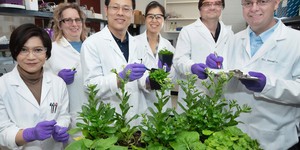Summary
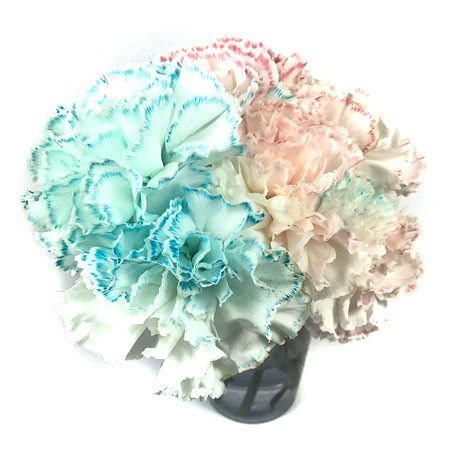 Image Credit: Svenja Lohner, Science Buddies / Science Buddies
Image Credit: Svenja Lohner, Science Buddies / Science Buddies
Introduction
Have you ever heard someone say, "That plant is thirsty," or, "Give that plant a drink of water"? We know that all plants need water to survive, even bouquets of cut flowers and plants living in deserts. But have you ever thought about how the water moves within the plant? In this activity, you will put carnations in dyed water to figure out where the water goes. Where do you think the dyed water will travel, and what will this tell you about how the water moves in the cut flowers?Materials
- Water
- Glass cup or vase
- Several white carnations or other white flowers (at least 3). Tip: Younger flowers work better than older ones.
- Measuring cup
- Measuring teaspoon
- Knife
- Food coloring; blue or red are the easiest to see
- Optional: Camera
- Optional: Celery stalks with leaves
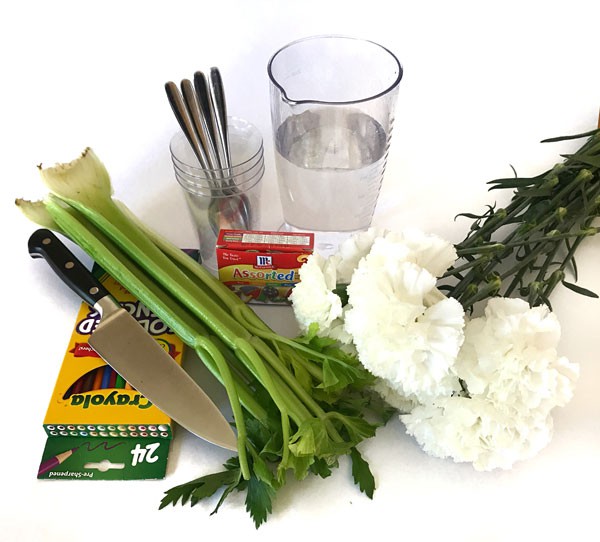 Image Credit: Svenja Lohner, Science Buddies / Science Buddies
Image Credit: Svenja Lohner, Science Buddies / Science Buddies
Instructions
- Measure out ½ cup of water and pour it into the glass or vase.
- Add 1 teaspoon of the food color to the water in the glass.
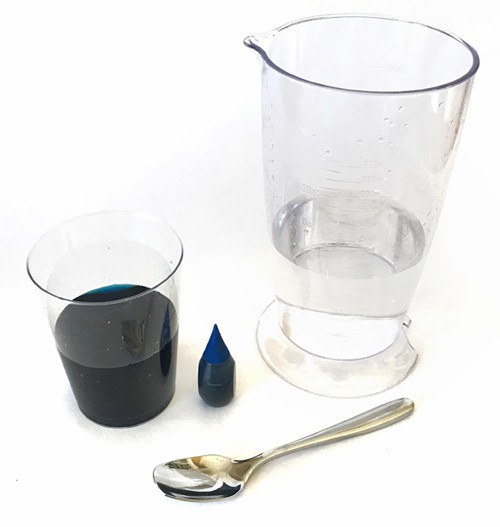 Image Credit: Svenja Lohner, Science Buddies / Science Buddies
Image Credit: Svenja Lohner, Science Buddies / Science Buddies
- With the help of an adult, use a knife to cut the stems of several (at least three) white flowers at a 45 degree angle. Tip: Be sure not to use scissors, as they will crush the stems, making it harder for them to absorb water. Also, shorter stems work better than longer stems.
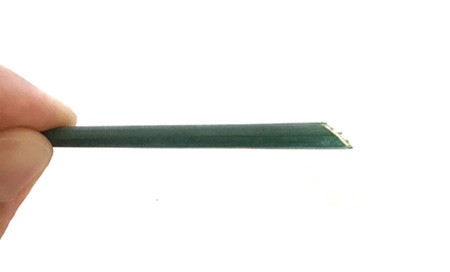 Image Credit: Svenja Lohner, Science Buddies / Science Buddies
Image Credit: Svenja Lohner, Science Buddies / Science Buddies
- Place the flowers in the colored water. As you do this, use the stems of the flowers to stir the water until the dye has fully dissolved.
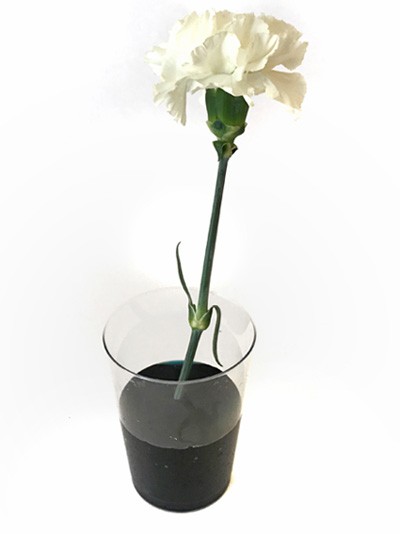 Image Credit: Svenja Lohner, Science Buddies / Science Buddies
Image Credit: Svenja Lohner, Science Buddies / Science Buddies
- Observe the flowers immediately after you put them in the water. If you have a camera, you can use it to take a picture of the flowers. How do the flowers look now?
- Observe the flowers around 2, 4, 24, and 48 hours after you put them in the dyed water. Be sure to also observe their stems, especially the bumps where the leaves branch from the stem and it is lighter green (it may be easier to see the dye here). If you have a camera, you can use it to take a picture of the flowers at these time points.
- How did the flowers look after 2 hours? What about after 4, 24, and 48 hours? How did their appearance change over this time period?What does the flowers' change in appearance tell you about how water moves through the plants?
What Happened?
After 2 hours of being in the dyed water, some flowers should have clearly showed dyed spots near the edges of their petals. By 24 hours, the flowers should have gained an overall dyed hue, which darkened a little over time. The stems should have also become slightly dyed in places, particularly where the leaves branch off.
 Image Credit: Svenja Lohner, Science Buddies / Science Buddies
Image Credit: Svenja Lohner, Science Buddies / Science Buddies
Water moves through the plant due to capillary action — which can pull liquids through narrow tubes like the stems — and transpiration. Water that is pulled through the stem by capillary action then makes its way up to the flower and leaves. Once in the leaves and petals, the water evaporates in a process called transpiration. Because the dye does not evaporate, it stays around and dyes the plant — especially the petal tips. When water is lost from the plant due to transpiration, this causes low water pressure in the plant, which triggers more capillary action and makes fresh water be pulled up through the stem, from the vase. Since the water is dyed, this also pulls more dye into the plant over time, dyeing it darker.
Digging Deeper
Plants use water to keep their roots, stems, leaves, and flowers healthy and to prevent them from drying out and wilting. The water is also used to carry dissolved nutrients throughout the plant.
Most of the time, plants get their water from the ground. This means that the plant has to transport the water from its roots up throughout the rest of the plant. How does it do this? Water moves through the plant by means of transpiration and capillary action. Capillary action occurs when the forces binding a liquid together (cohesion and surface tension) and the forces attracting that bound liquid to another surface (adhesion) are greater than the force of gravity. The plant's stem basically sucks up water like a straw! A simple way of observing capillary action is to take a teaspoon of water and gently pour it in a pool on a countertop. You will notice that the water stays together in the pool, rather than flattening out across the countertop. (This happens because of cohesion and surface tension.) Now gently dip the corner of a paper towel in the pool of water. The water clings to the paper and "climbs" up the paper towel. This is capillary action.
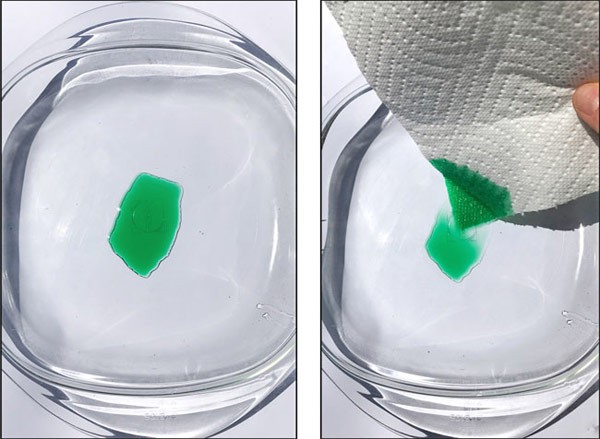 Image Credit: Svenja Lohner, Science Buddies / Science Buddies
Image Credit: Svenja Lohner, Science Buddies / Science Buddies
Ask an Expert
For Further Exploration
- In this activity, you used white flowers, but do you think you would see the same results with other flowers and plants? Try this activity a plant that is mostly stem, like a stalk of celery.
- Try doing this activity again but use more or less food color, such as one-half, twice, four times, or ten times as much food color. What happens if you increase or decrease the concentration of food color in the water?
- How would you make a multi-colored carnation? Hint: You could try (1) leaving the flower for a day in one color of water and then putting it in another color of water for a second day or (2) splitting the stem in two and putting each half of the stem in a different color of water.




